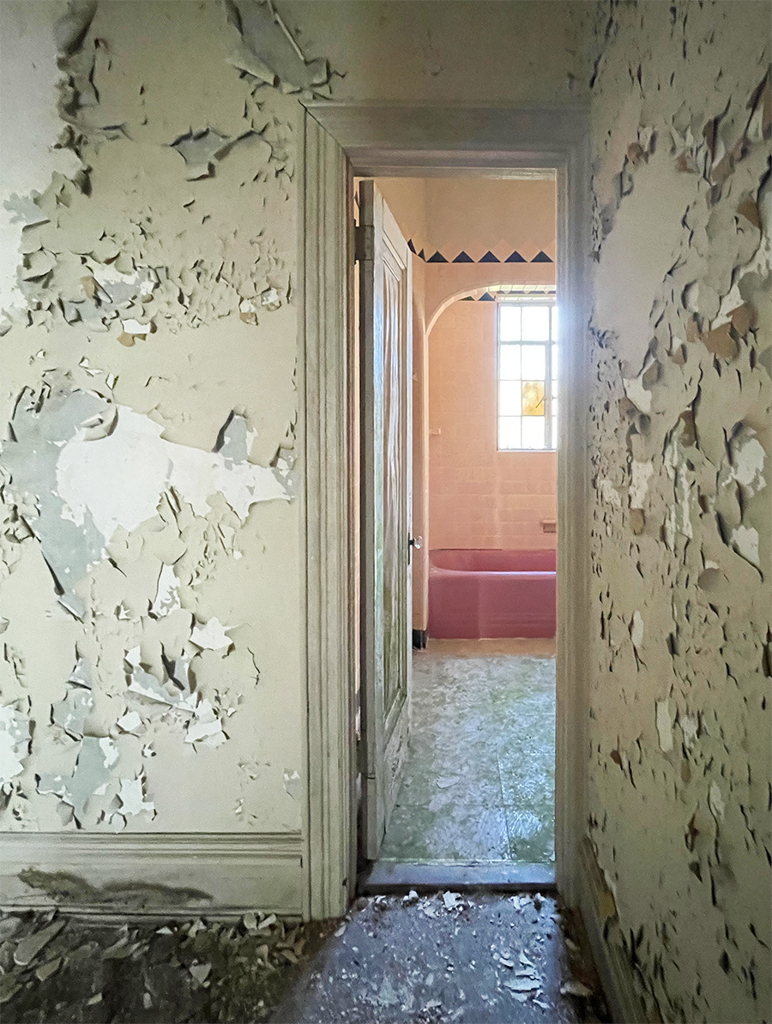
There’s at least one certainty when it comes to saving and reviving old homes: they’re full of surprises. One consideration that we’re constantly assessing is the presence of lead paint. Once commonly used in homes built before 1978, lead-based paint poses significant health risks when disturbed during renovation or maintenance activities. Working with lead-based paint requires meticulous safety precautions to minimize exposure and mitigate risks. It’s important to understand the hazards associated with lead-based paint and implement safety measures when undertaking projects in old houses to ensure the well-being of both occupants and renovators.
The Environmental Protection Agency (EPA) is the authority on lead-safe renovation, repair, or painting (RRP) and should be a primary resource, but some general best-practices are below.
We prioritize safety first.
Visual Inspection: Look out for chipping, peeling, or cracking paint, especially in areas like windowsills, door frames, and walls. Lead paint may also be present under layers of newer paint.
Testing: If you suspect lead paint in your home, consider having it tested by a certified professional. DIY test kits are also available, but professional testing ensures accurate results.
Hiring Experienced Pros: For safe lead paint removal or encapsulation, always enlist the services of certified contractors experienced in lead abatement procedures. Verify your contractor’s lead-paint removal certification on EPA’s website or by calling the National Lead Information Center. You may also ask if your contractor is trained in lead-safe work practices and request to see their training certificate. It’s always wise to have a detailed conversation about the lead-safe methods they’ll employ during the job.
Precautionary Measures: If lead paint is confirmed, take steps to minimize exposure. Keep surfaces clean, wipe away dust regularly, and consider encapsulating or removing lead-painted surfaces by a certified professional.
Children and Pregnant Women: Pay extra attention to areas where children spend time, such as playrooms and bedrooms. Pregnant women and young children should avoid exposure to lead paint dust and chips.
Regular Maintenance: Keep your home well-maintained to prevent paint deterioration. Promptly address any areas of chipping or peeling paint.

To learn more, reach out to EPA’s hotline at 1-800-424-LEAD (5323). For in-depth information on lead awareness and renovation, visit: EPA Lead Awareness Guide.
There’s at least one certainty when it comes to saving and reviving old homes: they’re full of surprises. One consideration that we’re constantly assessing is the presence of lead paint. Once commonly used in homes built before 1978, lead-based paint poses significant health risks when disturbed during renovation or maintenance activities. Working with lead-based paint requires meticulous safety precautions to minimize exposure and mitigate risks. It’s important to understand the hazards associated with lead-based paint and implement safety measures when undertaking projects in old houses to ensure the well-being of both occupants and renovators.
The Environmental Protection Agency (EPA) is the authority on lead-safe renovation, repair, or painting (RRP) and should be a primary resource, but some general best-practices are below.
We prioritize safety first.
Visual Inspection: Look out for chipping, peeling, or cracking paint, especially in areas like windowsills, door frames, and walls. Lead paint may also be present under layers of newer paint.
Testing: If you suspect lead paint in your home, consider having it tested by a certified professional. DIY test kits are also available, but professional testing ensures accurate results.
Hiring Experienced Pros: For safe lead paint removal or encapsulation, always enlist the services of certified contractors experienced in lead abatement procedures. Verify your contractor’s lead-paint removal certification on EPA’s website or by calling the National Lead Information Center. You may also ask if your contractor is trained in lead-safe work practices and request to see their training certificate. It’s always wise to have a detailed conversation about the lead-safe methods they’ll employ during the job.
Precautionary Measures: If lead paint is confirmed, take steps to minimize exposure. Keep surfaces clean, wipe away dust regularly, and consider encapsulating or removing lead-painted surfaces by a certified professional.
Children and Pregnant Women: Pay extra attention to areas where children spend time, such as playrooms and bedrooms. Pregnant women and young children should avoid exposure to lead paint dust and chips.
Regular Maintenance: Keep your home well-maintained to prevent paint deterioration. Promptly address any areas of chipping or peeling paint.

To learn more, reach out to EPA’s hotline at 1-800-424-LEAD (5323). For in-depth information on lead awareness and renovation, visit: EPA Lead Awareness Guide.